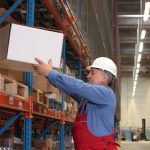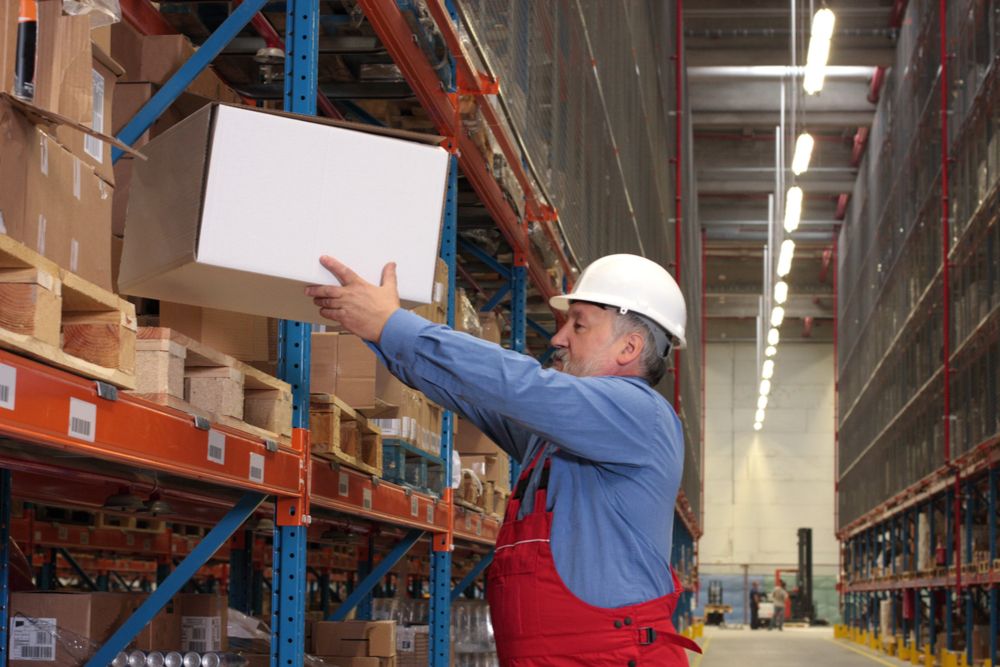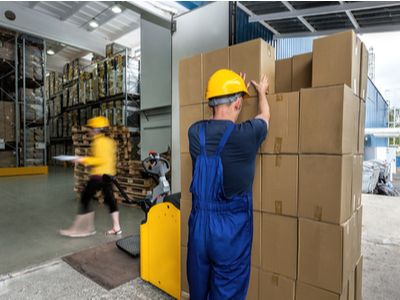
Lifting Heavy Objects Safely At Work

Many of us at one point or another have to lift heavy objects at work. According to the OSHA, you are doing heavy lifting once the load is over 50 pounds (22.7kg). You probably are a bit of a hunk and you’re used to lifting a lot of heavy things at home. You’re usually the one that people call upon to help them out with moving their furniture or push-starting your friend’s stalling car. But are you lifting safely?
The Effects of Heavy Lifting on the Body

After a while, you may find that all this pushing and pulling and lifting is putting a little bit of strain on your body, especially on your back. That’s probably because you’ve been doing it wrong all the time. Don’t ignore that back pain you’re feeling – it can turn into something really bad. You need to know what you’re doing wrong and how you should go about lifting up heavy objects properly, especially when you’re at work. Remember, lifting heavy objects - no matter how in shape you are - can pose serious health consequences if not done properly. Lifting, handling, or carrying objects at work can result in musculoskeletal injuries (MSis). These include sprains, strains, and other injuries which on some occasions can be lifelong. The risk of injury while lifting at work is significantly increased when improper lifting procedures are used. Be smart - take care of your health and personal wellbeing and avoid injuries which can impact your quality of life down the road. Make sure you are safely lifting objects when you are at work.
How to Properly Lift a Heavy Object
The safe way to lift an object is:
- Don’t rush it. Pick it up slowly and steadily and try to avoid hurried, jerky movements that may cause strain in your back’s muscles.
- Ensure that you keep your body facing the object that you’re lifting. Don’t twist while you’re lifting or else your back will get hurt.
- Never reach out and lift a heavy object. Keep it close to your body as you pick it up and carry it.
- Bend your knees, instead of bending your back (keep your back straight) to lift up the heavy object. That’s what you call “lifting with your legs”.
- When you lift the object, try to keep it between your waist and your shoulders, so that your back muscles aren’t strained that much.

If you use proper lifting techniques, the risks of injury can be significantly reduced. Using safe postures and techniques minimizes the stress and load through your spine and other joints. This is especially important if you are lifting heavy objects or repetitively. As a bonus, if you lift objects at work with proper form you will be strengthening muscles such as your core, glutes, and other stabilizing muscles. That means avoiding injuries brought on by improper lifting as well as improving your health.
The Importance of a Safe Workplace
While safe lifting is important, it is not enough to keep a workplace entirely safe. A safe workplace means having the right safety procedures and policies for all things such as working at heights, first aid CPR, confined space entry, as well as things such as WHMIS-GHS. A workplace with the correct procedures is not only safe, but productive. Since Advanced Consulting and Training Ltd.’s founding, their diverse team of certified health and safety professionals have taken great pride in their ability to deliver prompt, cost-effective and relevant workplace health and safety solutions. As a CPO approved, TSSA accredited, and WSIB approved provider, we look forward to discussing how ACT can help with your company’s safety requirements. Contact us Today!
ADVANCED CONSULTING AND TRAINING
FREQUENTLY ASKED QUESTIONS
- Strains and sprains: These injuries frequently cause discomfort, swelling, and restricted movement because they impact the back, shoulders, neck, and limbs.
- Herniated discs: A spinal disc bulge or rupture brought on by improper lifting practices can result in back discomfort, numbness, and weakness.
- Muscle tears: When lifting, sudden or excessive tension can rupture muscle fibers, causing pain, bruising, and decreased muscle function.
- Overexertion: Improper lifting can lead to overexertion, which can cause fatigue, exhaustion, and increased susceptibility to other injuries and accidents in the workplace.
- Persistent or acute pain in the back, shoulders, neck, or limbs during or after lifting.
- Feeling fatigued, exhausted, or lacking energy after lifting tasks.
- Noticeable muscle weakness or reduced range of motion in the affected body parts.
- Swelling, tenderness, or bruising around the muscles or joints involved in lifting.
- Difficulty in performing routine tasks due to pain or discomfort.


